It hasn't been so popular for a long time!The appointment is empty, it is worth two brushes and three brushes
Author:One Time:2022.09.13
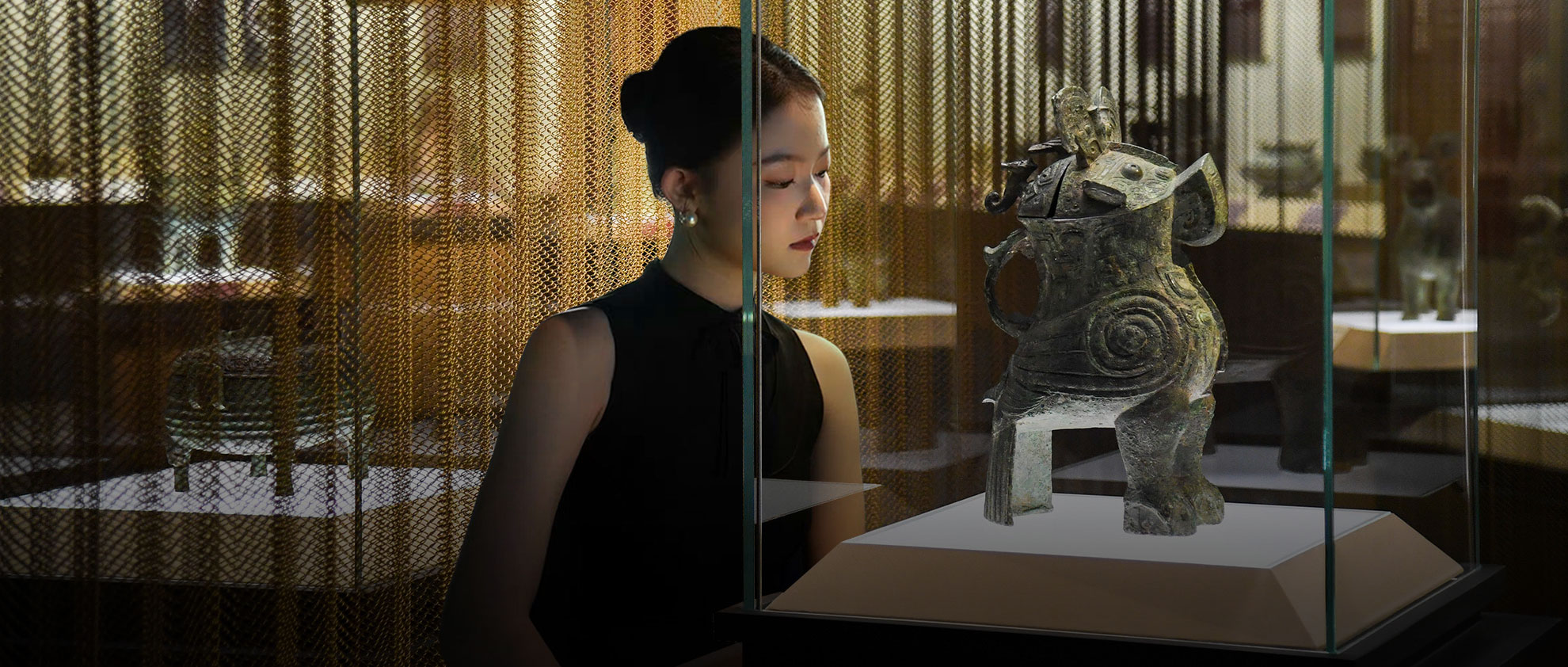
The first exhibition of the Shanghai Museum's "Why China" Cultural Relics Archeology Exhibition Series
"Zhaizi China -Henan Xiaeshang Wednesday Generation Civilization Exhibition",
It was a long -awaited exhibition in 2022.
One month after the opening,
Still need about one week in advance to grab the appointment,
There are also many people who have brushed and three brushes.

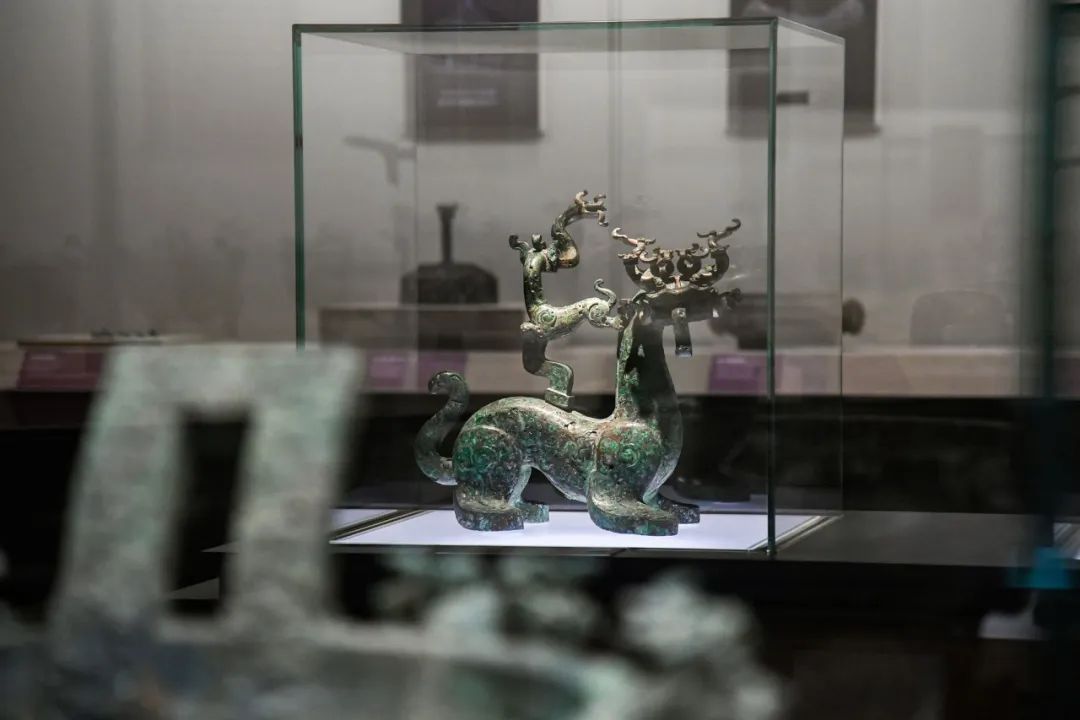
▲
exhibition site
A total of 314 cultural relics exhibited at the exhibition site,
The national first -level product reaches 67 pieces/group,
Cultural relics cover 89 archeological sites in Henan.
20 Henan Wenbo Institutions,
Including the Henan Museum, including celebrity cultural relics, including
With the "National Treasures" on a business trip to Shanghai.
Why is Henan?
Cultural relics of more than 3,000 years from us,
Why did you ignite the public's enthusiasm?
What are the highlights of traditional cultural relics?
A visit to the Shanghai Museum exhibition site,
Hu Jialin, a curator and a research librarian in Shangbo.
Written article: Ye Li
Responsible editor: Chen Ziwen

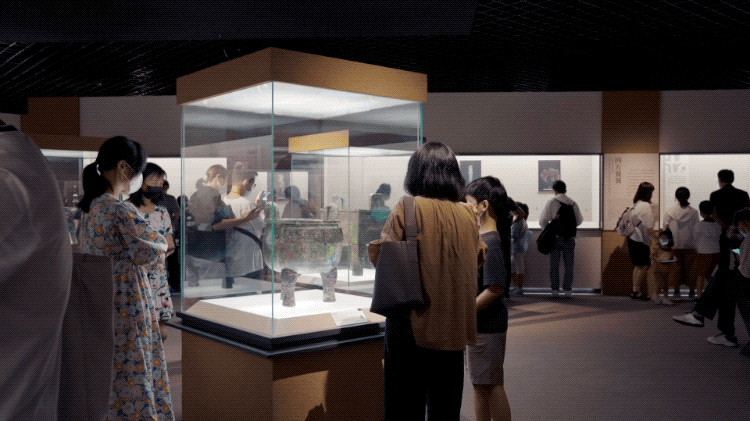

▲
The audience is watching "Shang Yang Fang Sheng"
The cultural relics exhibition has been violated for a long time.
On a normal working day at the end of August, we came to the Shanghai Museum and started to line up for nearly half an hour from the entrance to the first floor of the "Makiz China" exhibition hall. However, there were more than 9 o'clock in the morning, and the glass showcase had been crowded before.
Visitors of all ages can invest in: young people hold the interpreter in one hand, and hold the camera with the other hand, looking for the best angle of taking photos of bronze gods; middle -aged grandfather, who is even more than those around them, are even more than those around them. Shake the historical stalks of the Spring and Autumn Period; the children were dragged by parents, lying on the showcase to recognize Oracle, and the crickets, Jue, 簋, and Ding quickly opened their mouths.
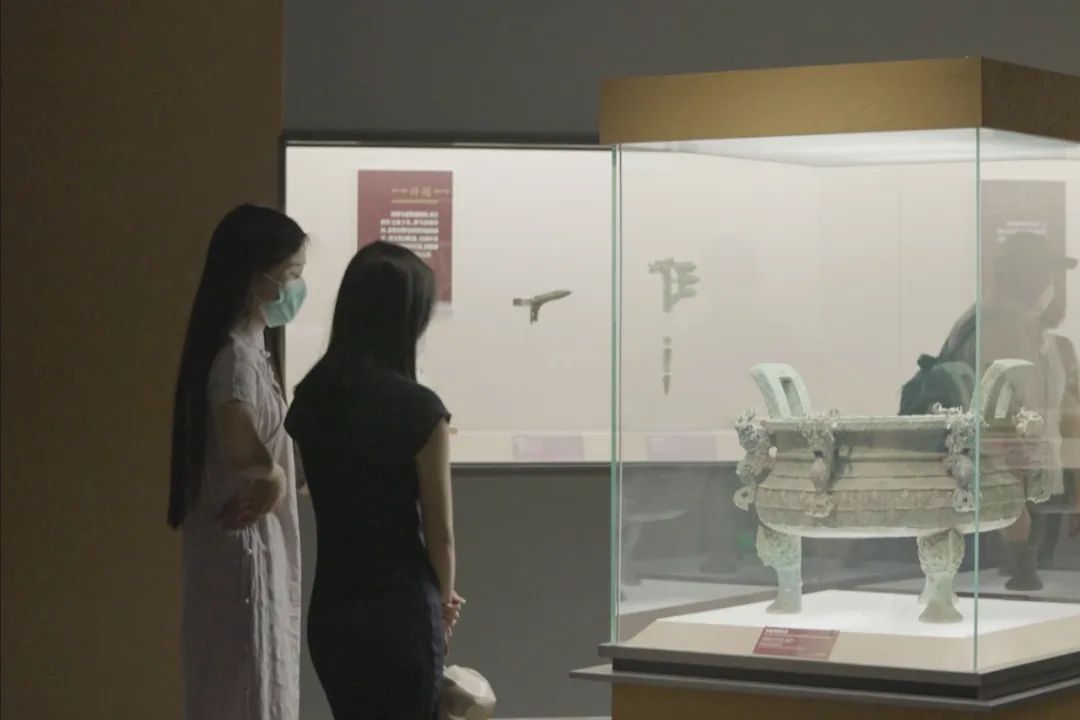
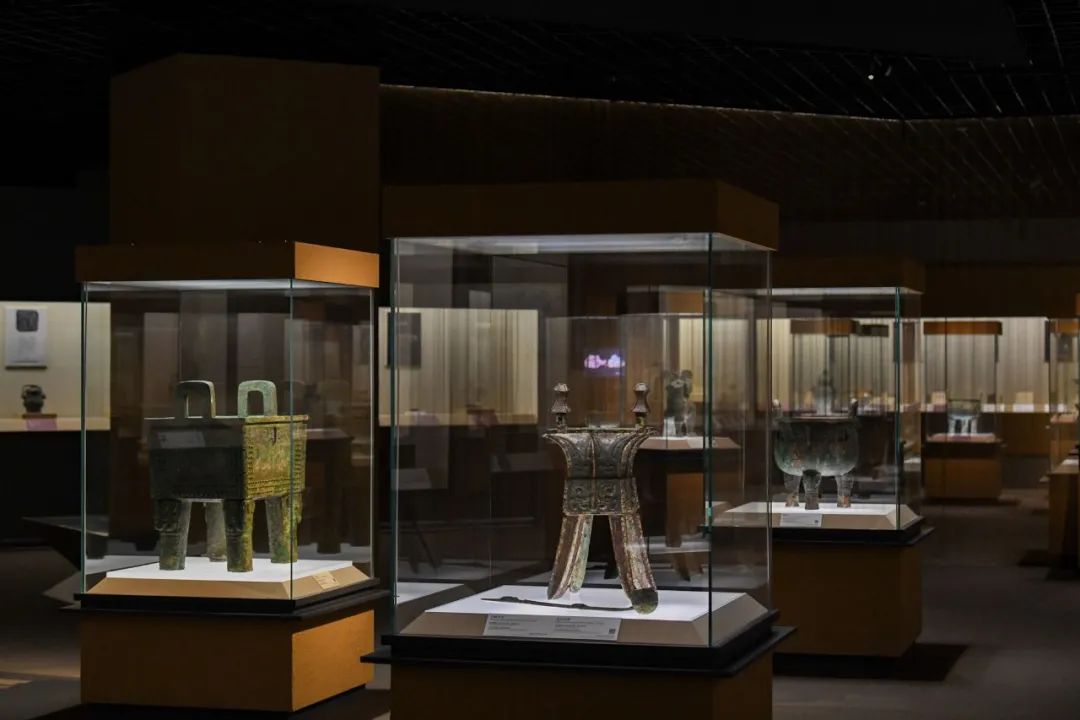
▲
exhibition site
This time, the Shanghai Museum's "Miyako China -Henan Summer Summer Wednesday Civilization Exhibition" has been open to the public for free from July 30, and it has been more than a month since it has passed.
From August, the museum also opened two night scenes a week, but the popularity has not dropped a day, and even the museum practitioners lamented: "It is still hot every day after the opening, this is what we did not expect before. "
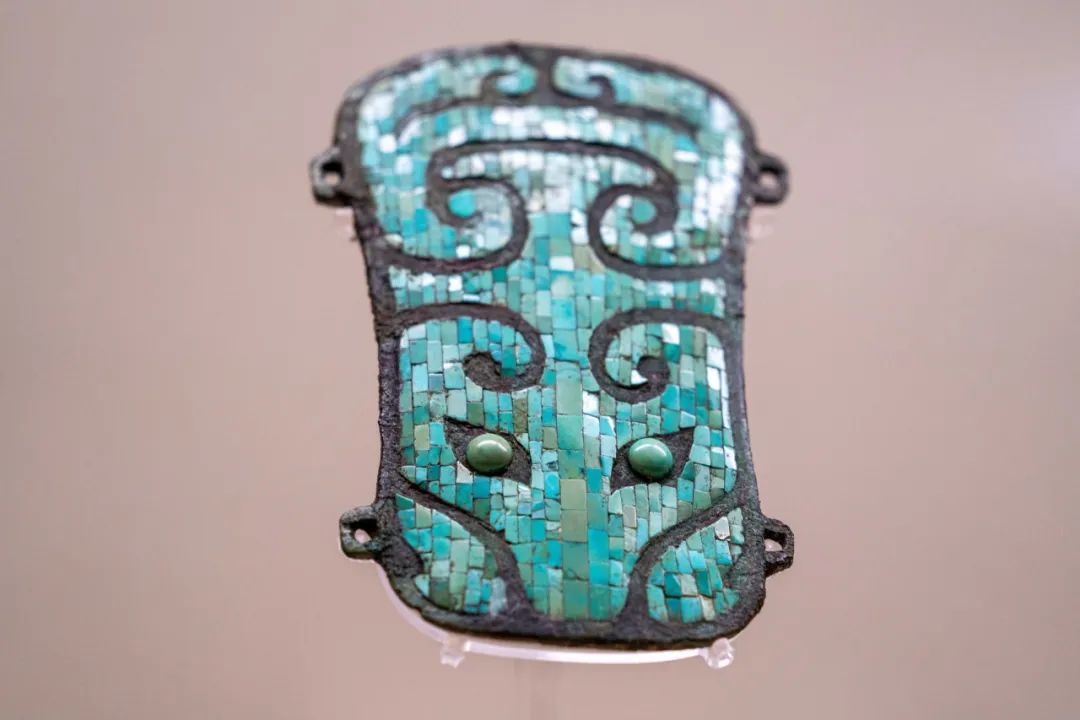
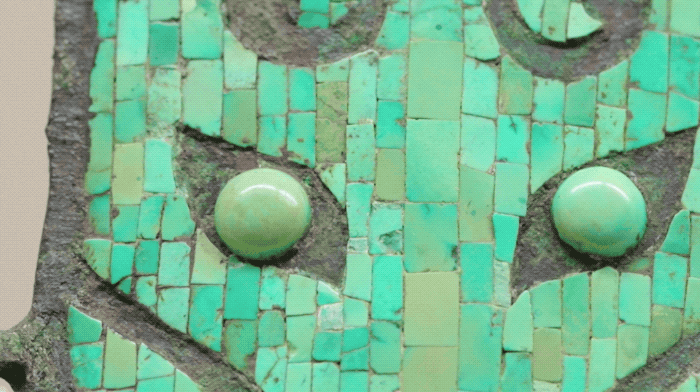
▲
Inlaid with turquoise beast facial manking decoration
Late Xia Dynasty
Why is this cultural relic exhibition fire?
First of all, the exhibition cultural relics are very good. This exhibition exhibited a total of 217 cultural relics/group, with a total number of cultural relics 314, of which 67/groups were reached by the national first -level items.
There are many Wenbo institutions collected by the exhibition. Because it is about Henan's exhibition, it has received strong support from Henan Cultural Expo Agency. Henan Museum, Henan Provincial Institute of Cultural Relics and Archeology Research Institute, and the Institute of Archaeological Institute of the Chinese Academy of Social Sciences have all come.
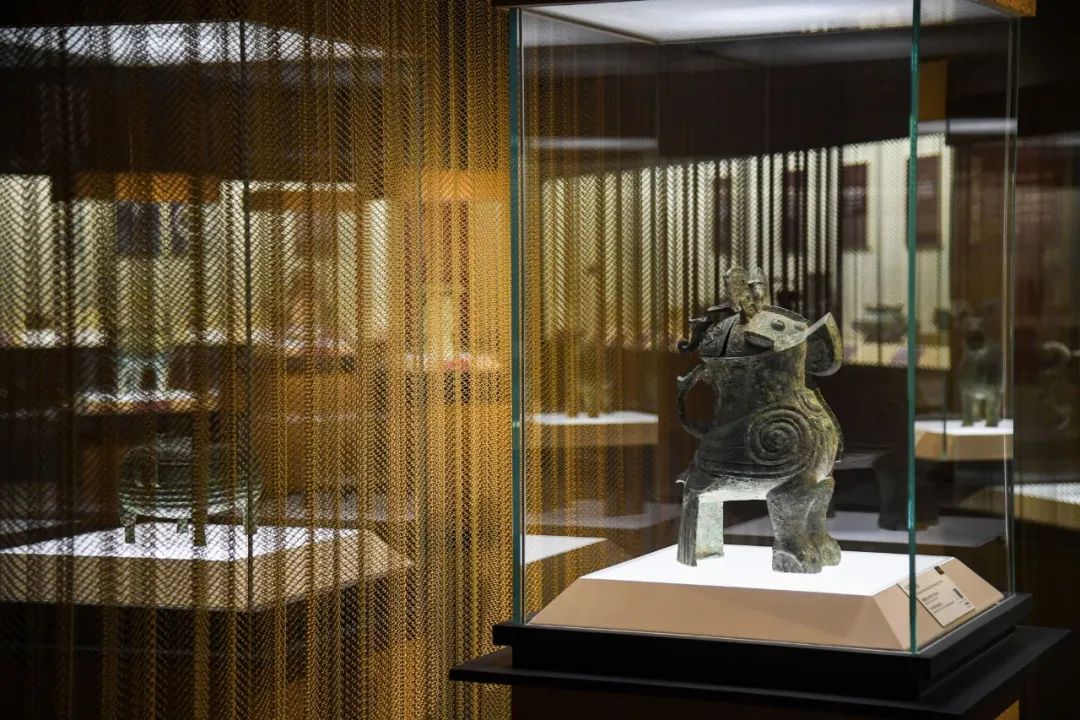
▲
Women's good respect for the late Shang Dynasty
There are a few of them, which are the "star cultural relics" in the first -tier museums of Henan. For example, the woman is a good residence, which is the "treasure of the town hall" of the Henan Museum; inlaid with the green beast facial musement, the C position of the Erlitou Site Museum all year round -this time, the ranks of the "national treasure travel" have been added.
There are also many unearthed cultural relics, which are usually exhibited near the museum near the archeological mining site, such as the Erlitou Site Museum, nearly 20 kilometers from Luoyang.
These institutions are usually scattered in the wilderness and geographical location. Assuming that there is a heart to go one by one, no ten days and a half months will not come, but this time, they have gathered in an exhibition.
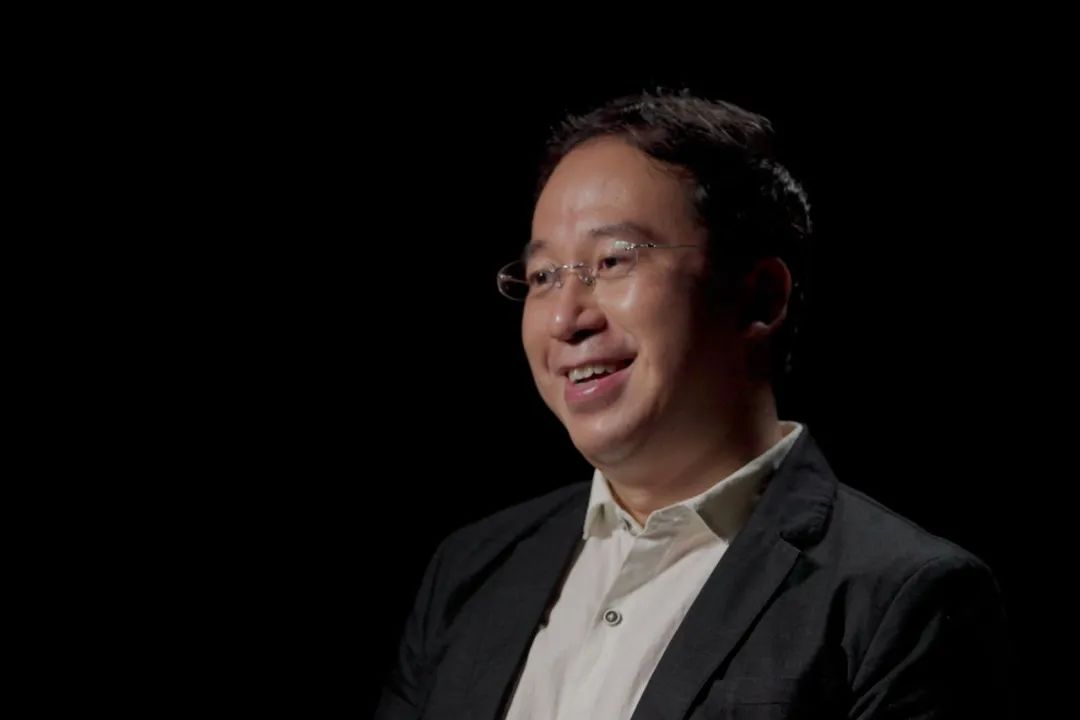
▲
An interview with Hu Jialin, the curator of the Shanghai Museum "Zhaizi China"
The curator Hu Jialin told us that after the exhibition was opened, many literary experts in Henan Province came to see and were surprised that they had not seen such a complete exhibition in Henan that they could bring so many cultural relics unearthed in Henan.
"This is also an important reason why this exhibition is very sensational. The response is very good."
In addition, the Shanghai Museum itself has very heavyweight bronze collections. A "bronze Shang Yang Fang Sheng" is rarely displayed.
An Shang Dynasty Bronze (Yǒu), which is collected by the Pavilion of the Museum, has been displayed side by side with the "family -friend" Shang Dynasty Bronze (Jiǎ) of the "family relatives" of Henan Museum. The same family named "Migration".
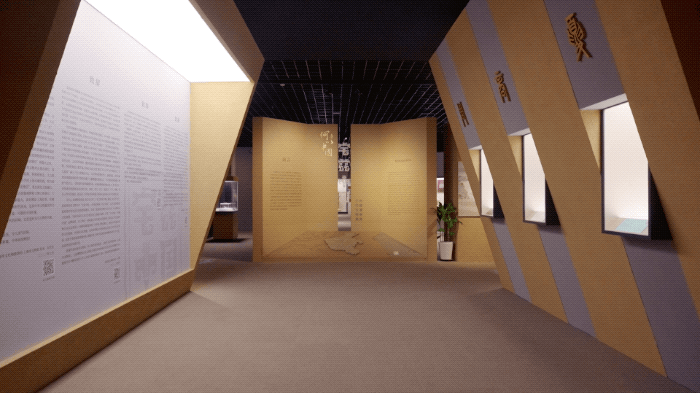
▲
In the exhibition hall, Xia, Shang and Zhou dynasties take one tripod
High -level bronze exhibitions, in the hearts of Wenbo fans, have always been comparable to the Calligraphy and Calligraphy Exhibition.
Although this exhibition is not directly based on the theme of bronze wares, because it is showing the Xia, Shang and Zhou civilization, these three dynasties have witnessed the peak of the rise of bronze civilization, and bronze -class exhibits are the heaviest.
As soon as the exhibition came up, in the prelude hall, three bronze Ding of three dynasties was selected as representatives. The development of bronze wares was "changed and unchanged". Essence
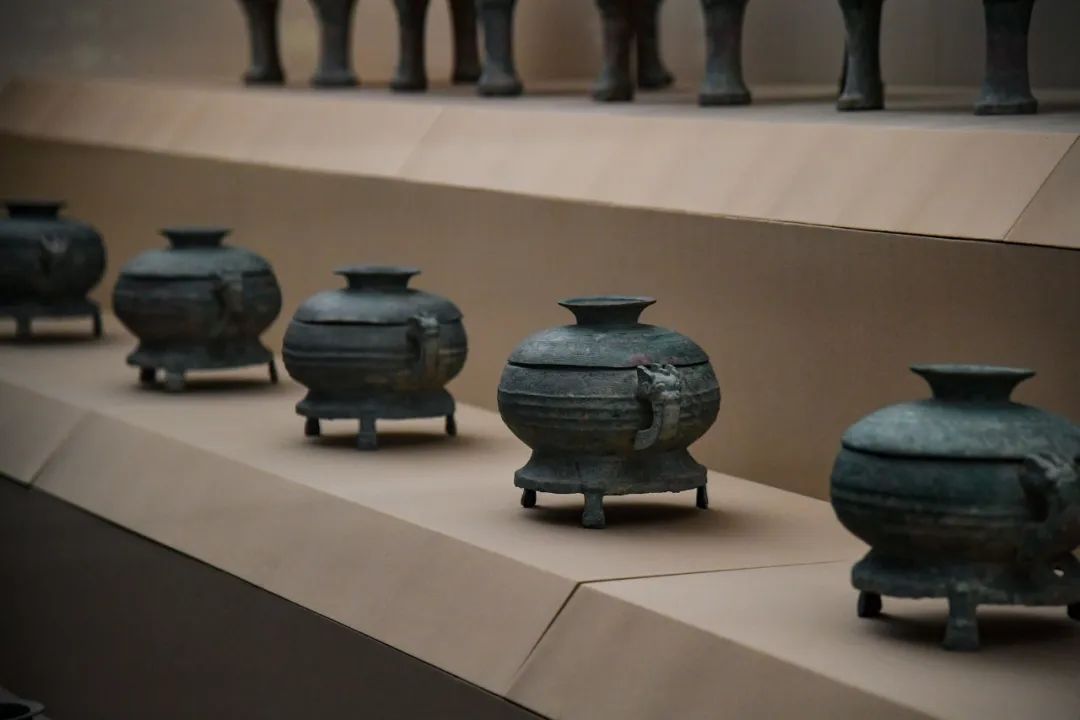
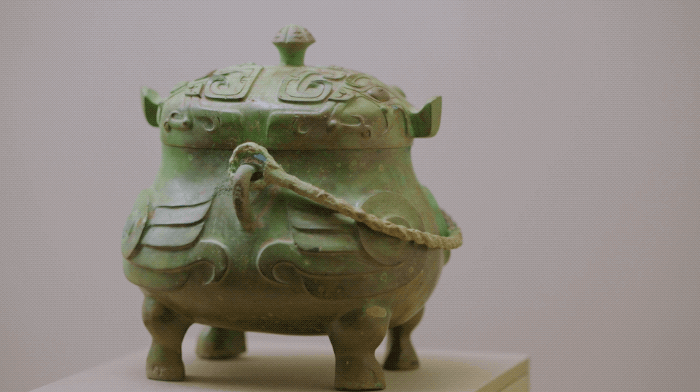
▲
Bronze ware after different oxidation state
The time span of the bronze exhibits this time is long, from the four thousand years since the Xia Dynasty bronze container, to the bronze "Jiuding and Eight" in the Zhou Dynasty.
The number is large, accounting for 2/3 of the total number of exhibits, and rich in organizational type. From the earliest "simple and unparalleled bronze" to the peak of the first bronze skills, the Ding weighed by a few tons, and then to various sacrifice occasions, to various sacrifice occasions Use food, wine, and musical instrument.
Because of the different buried conditions in various places, the degree of oxidation on the surface of the bronze is also different. Compared with the color, it is very interesting.

▲
Bai Taoxiang Zunzun Shang Dynasty
In addition to bronze wares, the exhibition also considers other rich materials, jade, pottery, gold and silver, and other exhibits. Perhaps the volume and momentum are not as large as bronze, and the craftsmanship is exquisite. "As if you have passed over, you can also be faked in the contemporary art exhibition." ▲ ▲
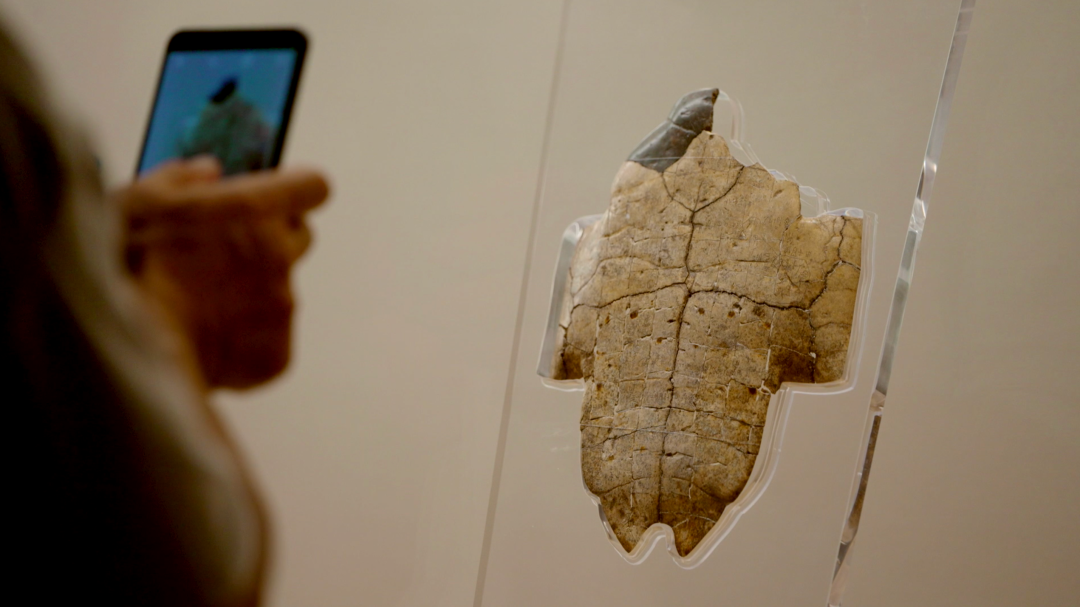

The engraved resignation of the exhibition hall site
At the exhibition site, there was a rare all -see -out. The whole piece of resignation was often crowded in front of the display cabinet. Many people lamented at the scene, "For the first time in life, I saw the Oracle in the textbook with my own eyes."
▲

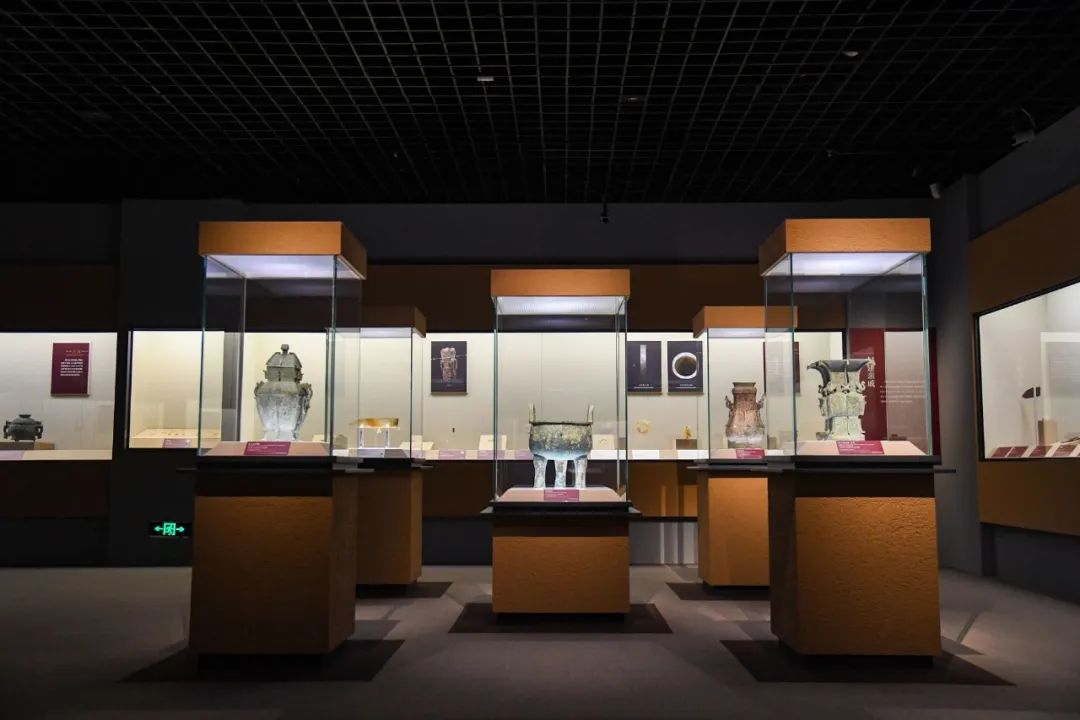
exhibition site
Why is Henan?
The exhibition name "Zhaizi China" comes from a inscription on the Bronze "He Zun" in the Western Zhou Dynasty, which means "living in the world". This is the earliest record about the term "China". "Among the world" refers to the current area of Luoyang, Henan.
There is also a popular saying, "a history of Henan, half of Chinese history." A exhibition describing the early Chinese civilization must start from the core area of Henan.
In the exhibition hall, a map in Henan Province is always full of audiences. On the map, densely marked the important archeological excavation site in the province.
There are many archeological sites and many cultural relics. How to choose? Which cultural relics are displayed to the core culture of Xia Shang on Wednesday?
▲
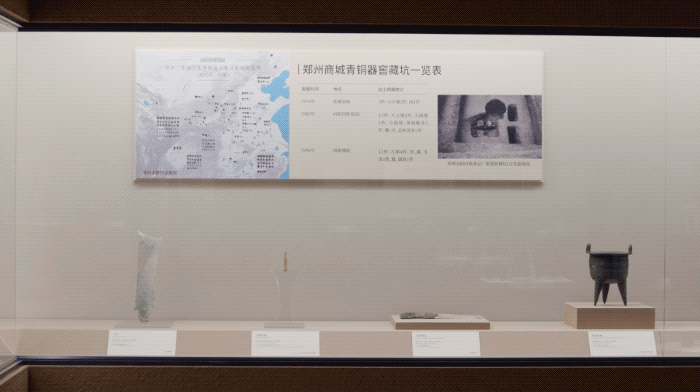
A set of cultural relics in the showcase, with an introduction to the unearthed site
Hu Jialin told us that the curatorial team finally chose to take the "king capital" as a clue, and in the order of the time, the summer business civilization was connected in series on Wednesday.
This exhibition involves a total of 89 archeological sites in Henan. On average, there are more than 300 exhibits, and each site has about 3 pieces.
"The cultural relics unearthed in the same area are displayed together. Some of the unearthed ruins and locations are marked with the excavation scene map."
For ordinary audiences, finding cultural relics and the specific venues it lives can be emotionally established to connect a specific urban location.
Three units, many of them are famous important sites.
summer
▲

Pig first pottery cover the early summer
▲

Erlitou site palace palace sand table model
The Erlitou site was considered by many scholars to be the place where the Xia Dynasty king was located, and the beginning of the civilization of the Huaxia dynasty, about 3800 years ago.
Now archaeological discovery is a large -scale capital with meticulous planning, the earliest building complex containing the central axis layout, and the official handicraft workshop with walls, and the bronze rituals of the combination are unearthed.
There are several other early sites in the exhibition hall, such as the Dengfeng Wangchenggang site in Henan, and the earliest composite composite fan tin bronze container residue was unearthed, indicating that in the early summer, bronze casting began.
business
▲

Shang Dynasty Cultural Relics Exhibition Hall
The Zhengzhou Mall site, which is about 3500 years ago, has unearthed large bronze rituals, such as bronze generous tripods. Its casting is difficult. It not only requires a large number of craftsmen, but also needs to integrate copper ore resources to become a symbol of kingship. It was also since then that the noodles of the beast have been popular on bronze.
▲
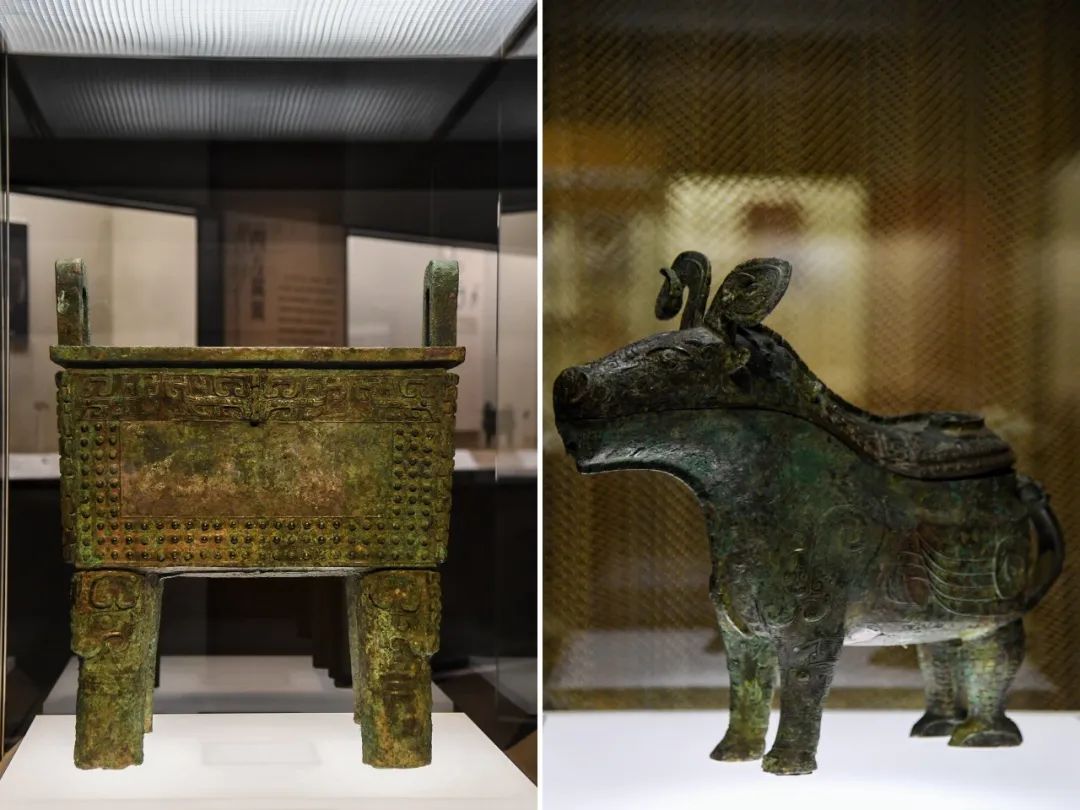
Left: Mother Si Xin Fang Ding
Right: Si Mu Xin Yan
In the late Shang Dynasty, the capital of the city, the well -known Yinxu site of Anyang, Henan.
In the exhibition hall, a large number of bronzes unearthed from Yin Ruins have exquisite craftsmanship, representing Chinese bronze civilization to the first peak. This hall has also become the most dense area of the audience.
Since the 1920s, my country's initial archeologists have begun to discover scientific archeology of Yin Ruins, becoming the beginning of China's centennial archeology. In my country's "Top 100 Archaeological Discovery of the 20th Century", Yin Ruins topped the list.
According to conservative estimates, the area of Yinxu has an area of 300,000 square kilometers, and the 50 Forbidden City is as large. In the past century, archeological discovery continued.
▲
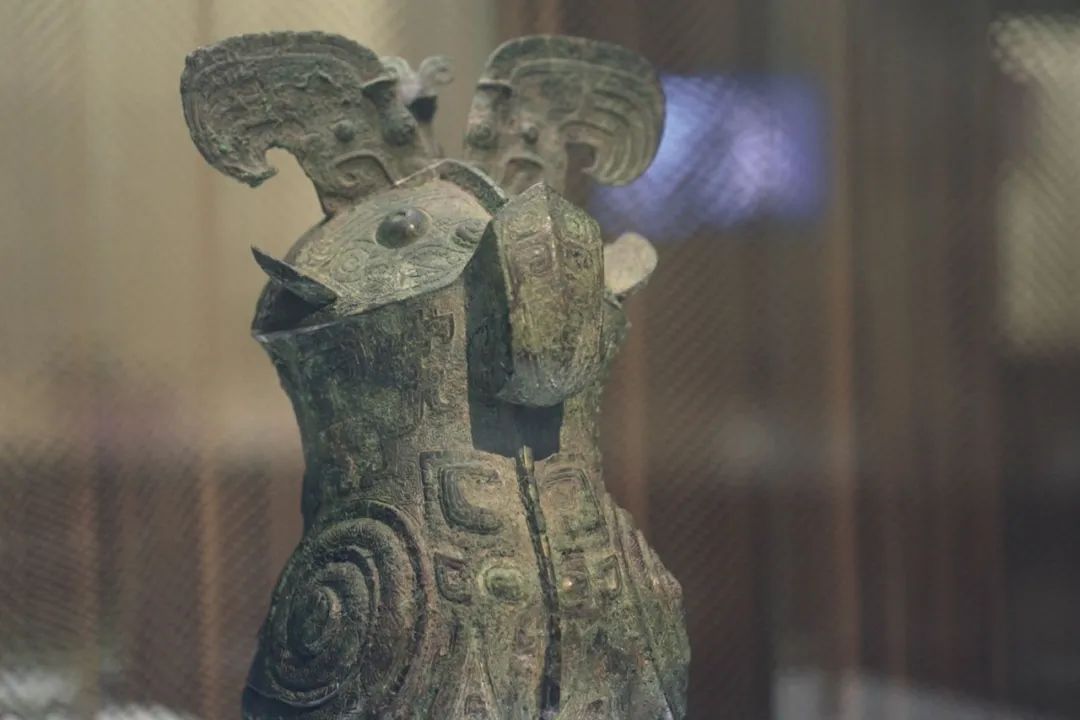
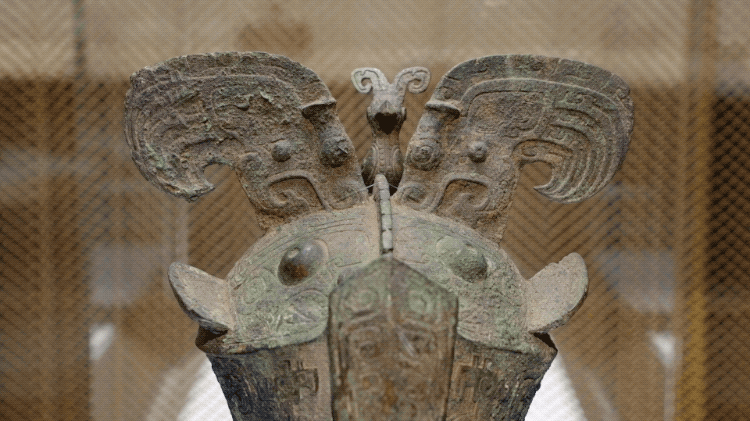
Women's good respect for details
Among them, in 1976, the excavation of the tomb of Xiaotun Village, Yinxu Village, was a very important one, and it was also the source of the presence of women at the exhibition site. Women's Hao is the first female general in China, the wife of Shangwang Wuding, and the civil and military.
▲
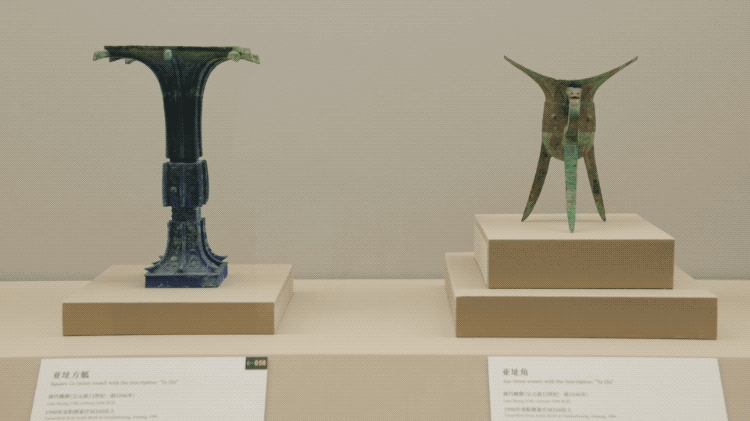
Asian site Fang 觚
The tomb with the woman is approaching, and there are two generals of the Shang Dynasty, the tomb of the Asian Chang, and the Asian site. The businessman heavy wine, a set of lords, is a very high level of ritual level.
In the future, large -scale kings such as Yinxu may have new discoveries, and may even refresh our perception of past civilization.
week
▲
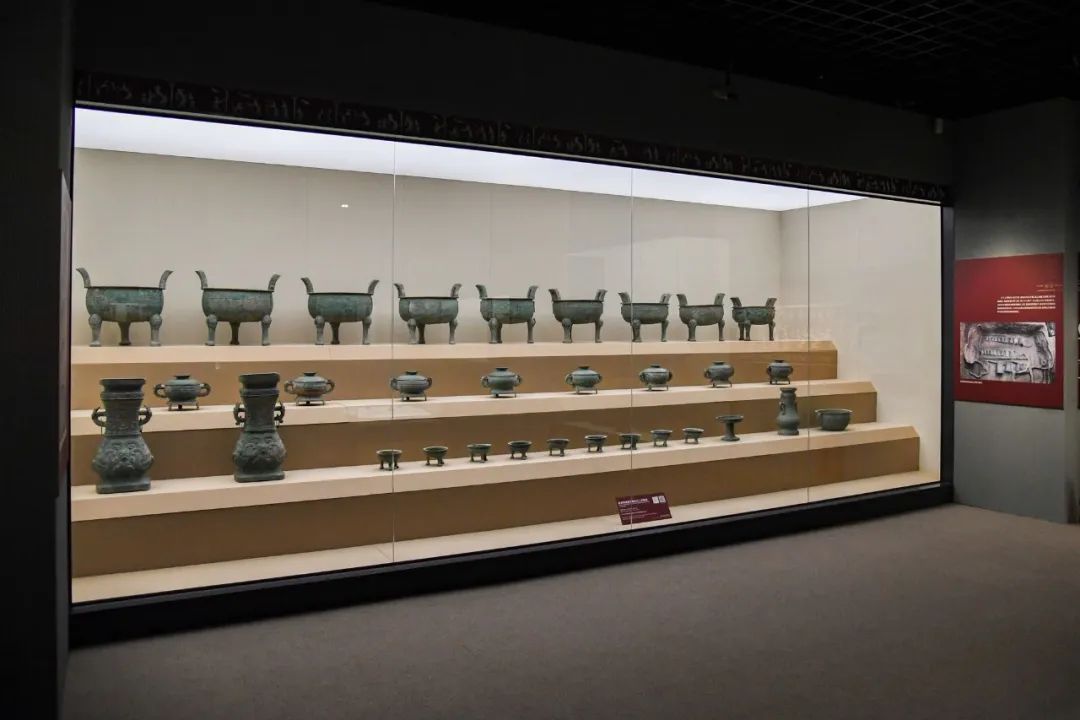
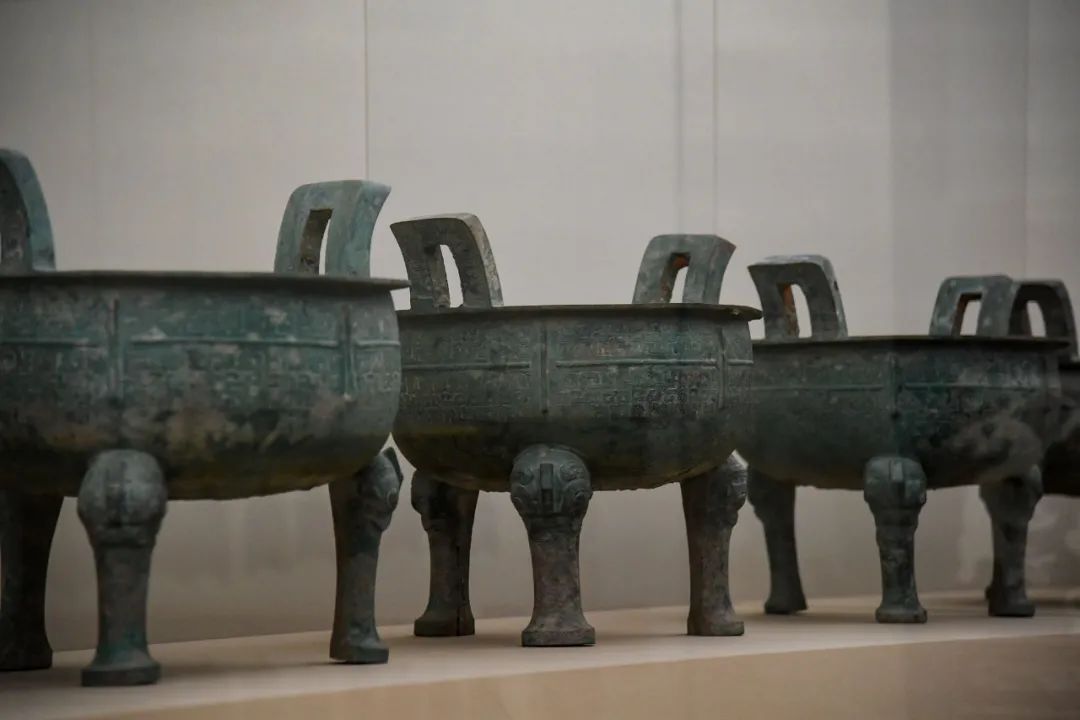
Jiuding Babe
In the "Zhou" unit, first through the cultural relics unearthed in Luoyang, it tells Zhou culture, and a large number of cultural relics borrowed from the Luoyang Museum.
▲


Inlaid with green pine god beast spring and autumn late
In the Western Zhou Dynasty, the division system was established, and the bronze wares of the country in various places have local characteristics. For example, the Nanyang Xichuan site in Henan brought out the Chu culture. Inlaid with the turquoise beasts, the five parts are assembled on the spot.
▲

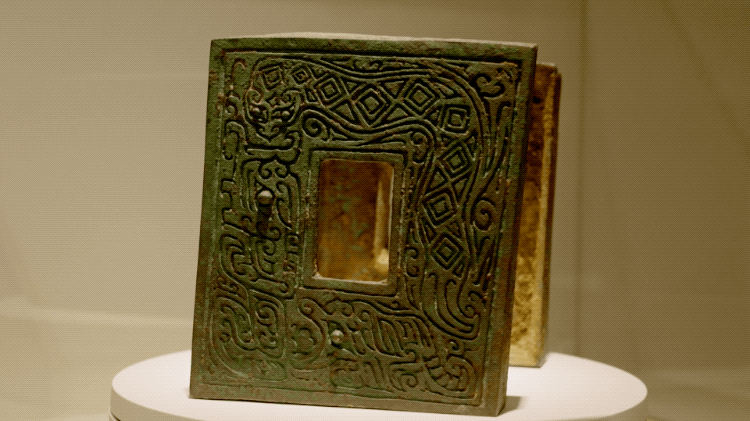
Beast -faced architectural components
Mid -term Shang Dynasty
Pulling a historical time axis, Xia, Shang Zhou is far away from contemporary people, and does not have a popular cognitive foundation like Qin, Han, Tang and Song dynasties. It is inevitable that there is a high threshold. How to get closer to us?
Many exhibition areas have deliberately arranged mirror reflexes, 360 -degree rotating the exhibition set. Whether it is reading inscriptions or appreciation of the details of the details, it is more convenient.
▲
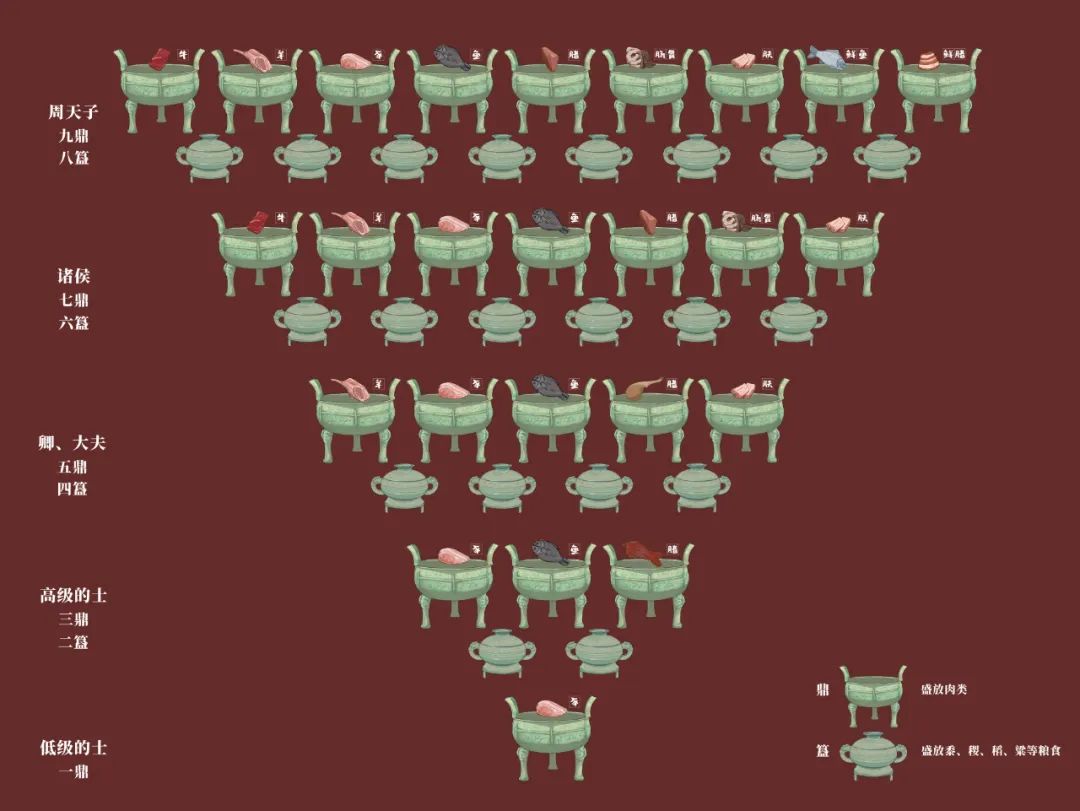
The number of Ding Ding and the type of meat and the type of meat food
At the exhibition, the museum made a lot of popular and interesting instructions. In the "Jiuding and Eight" district, a special diagram of food distribution was specially arranged. The meat was entered into the tripod, and Gu Su entered the puppet. There are also some "Easter Eggs", which are buried on the guidance manual, which is convenient to click on the picture.
▲
The main color of the "summer" unit is cyan

▲
The main color of the "week" unit is red

Chinese traditional elements have also been integrated into the design of the exhibition. The graphic design of the exhibition hall is inspired by the word Oracle "water". The raised corner above the exhibition hall symbolizes "Zhongyue" Songshan, Henan.
On the moving line, the five parts use 5 colors to correspond to the five elements in traditional culture. Among them, Xia is wood, cyan; business is gold, white; Zhou is fire, red.
▲
"Week" unit starting area
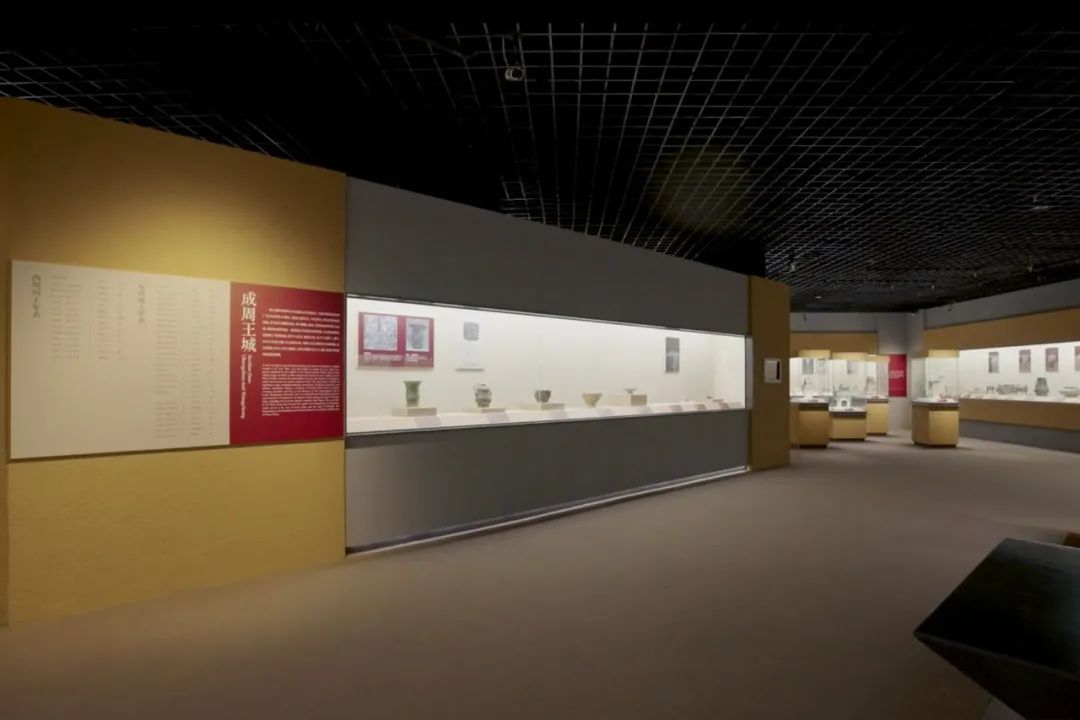
The latest and most important research results also appear in the exhibition. At the beginning of the "Zhou" unit, the annual table of each generation of Zhou Wang is prominent. This is in recent years, my country has launched the "Xia, Shang and Zhou Dynasties Project", and integrates archeology, history, astronomy, and scientific historians.
Through the literature, the inscriptions and astronomical stars on the bronze wares, scholars have determined the king of Zhou Wu, which occurred in 1046 BC. The earliest literature year in China began in 841 BC. The year of the year was greatly advanced, and the annual watch of the generation of the Zhou Dynasty was very complete.
▲
exhibition site
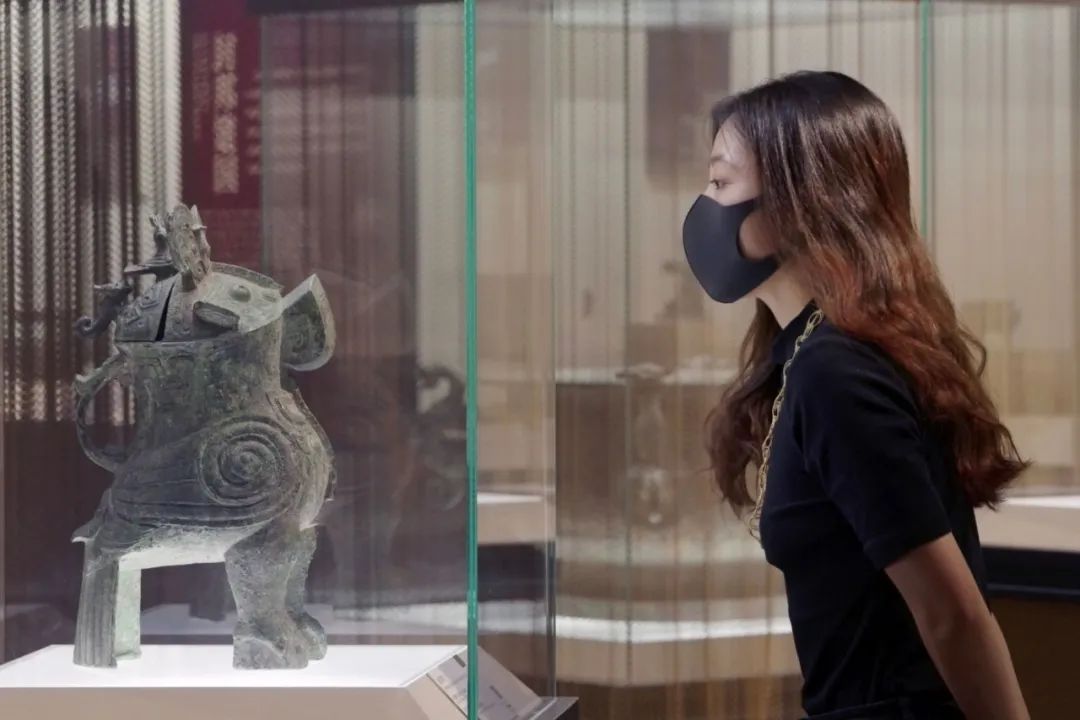
The "Miyaki China" exhibition is the first chapter of the Shanghai Museum's "Why China" Cultural Relics and Archeology Exhibition.
"Why is China? Where is the characteristics of Chinese civilization? This is the question we want to explore through this series of exhibitions."
In the past, the most common operation of major museums was to do the "boutique exhibition". The purpose was to show the most essential cultural relics. Now this model is slowly abandoned.
"We hope that through this exhibition, not only the beauty of art, but also in -depth thinking, through the logical relationship between cultural relics, present the audience to present a complete civilization."
▲
exhibition site

One also observed on social media that the audience's cultural exhibition of such high thresholds is also willing to share various "best ways to open".
There are many cultural blog enthusiasts "tap water" on the Internet to watch exhibition strategies and experiences, and some people find each decoration on the bronze ware. Some people recommend that you can watch cultural relic documentions such as "If the National Treasures Speak" before the exhibition, which can be used as a pre -preparation in advance; after reading this exhibition, it will list a series of historical book lists. Houses China.
Between the exhibition and the exhibition, there is also a chain reaction between the city and the city. At the same time, the Jin Dynasty Bronze Exhibition, which was held in the Nanjing Museum, all involved the Zhou Dynasty. After watching the exhibition in Shanghai, some people began to plan to check in various niche archeological museums in Henan, such as the Erlitou site and the Yinxu site.
Xia Shang on Wednesday, the vast film feathers, lived again today.
This is by far the earliest bronze Ding of my country's archeological discovery, and it is also a symbol of the king's ritual system. Its shape and decorative style are in the same vein with the Tao Ding in the late Tao Ding in the late Longshan culture of Henan.
The device is inlaid with hundreds of turquoise inlaid with the noodles of the beast. The processing is exquisitely processed, and the silk is buckled. When the device is unearthed, it is placed on the owner of the tomb. From the symmetrical perforation buttons on both sides, wearing it is tied to the owner's chest, it should be used as an important carrier for communication heaven, earth, god, and man.

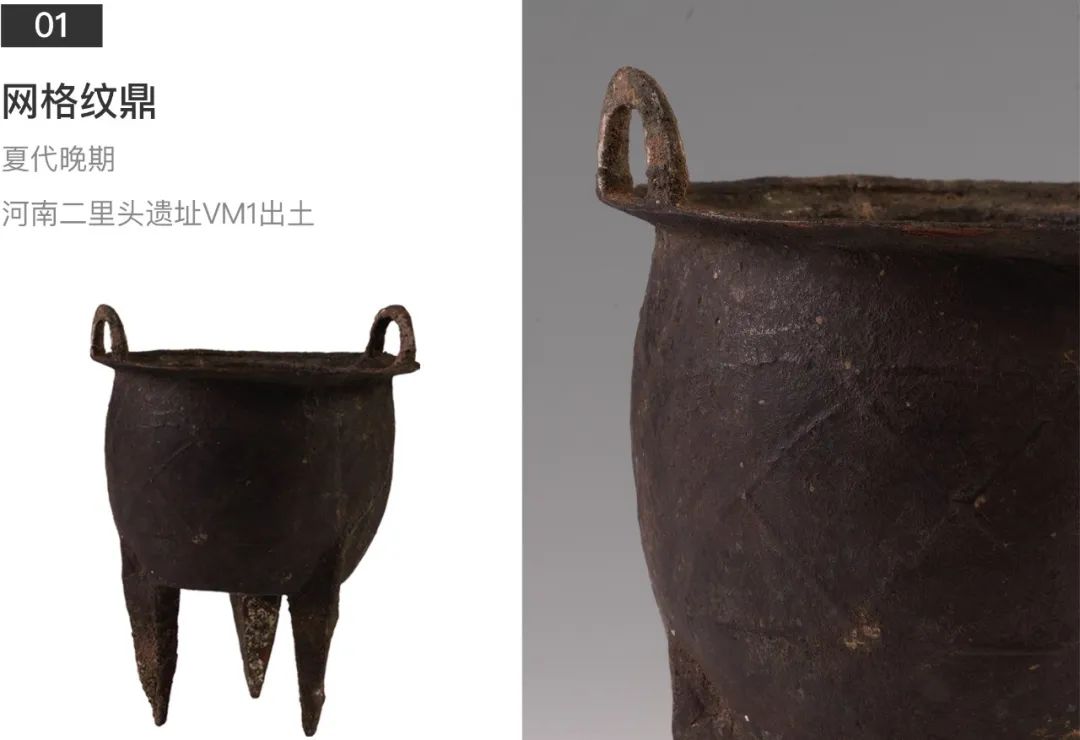
The inner wall of the body has the word "woman good". The whole utensil is a standing bird (owl) form, which is lifelike, integrates realism and exaggeration. It is the concentration of the aesthetic concept of bronze art in this era.
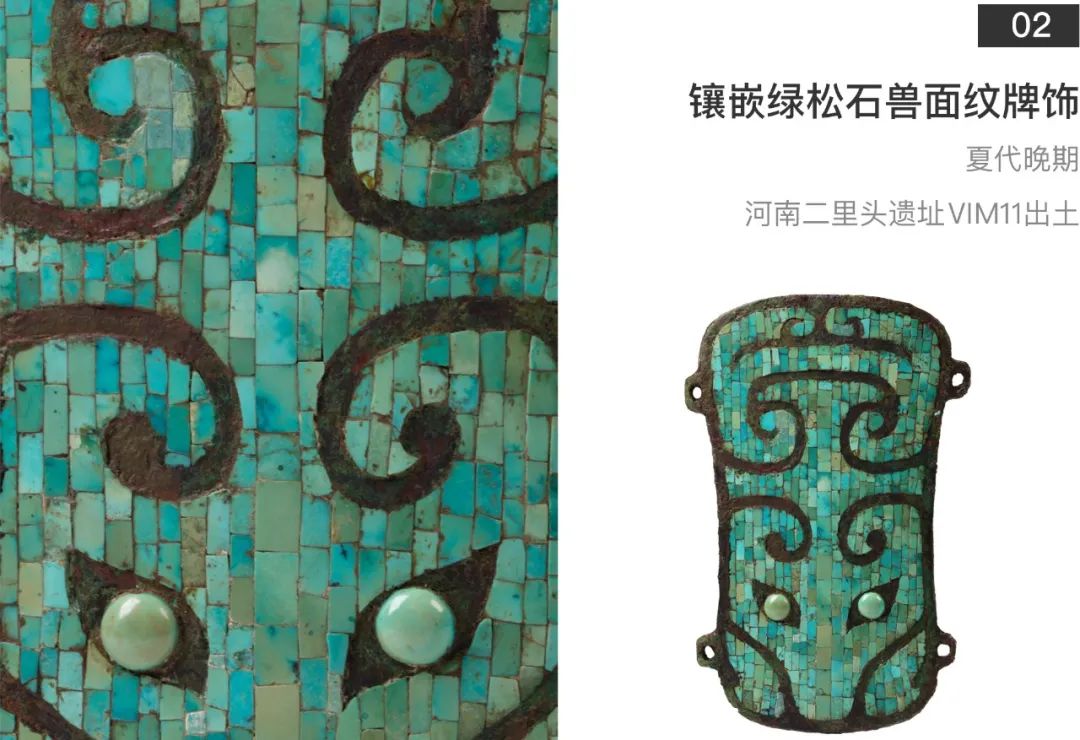
Sitting is a very important sitting mode of the Shang Dynasty. In the character image of the Shang and Zhou dynasties currently unearthed, most of the round carved utensils have adopted this attitude. Under the neck of the jade people, there is a small hole in the back of the brain, and there is also a hole between the legs underneath to wear or insert it.
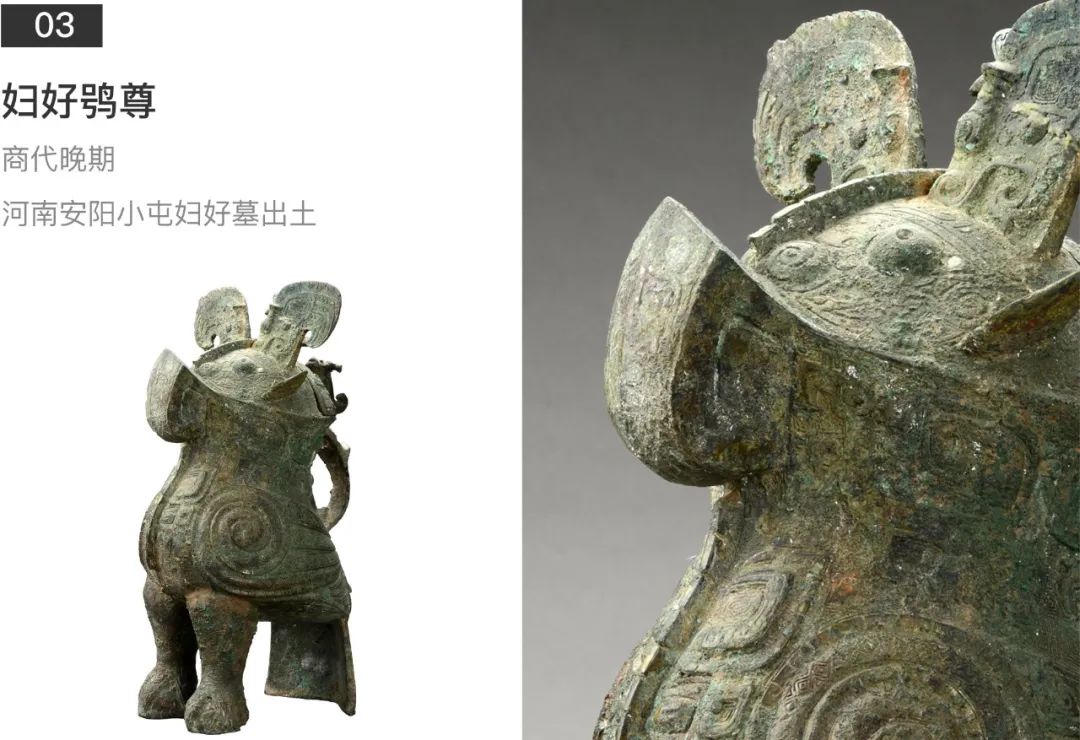
A group of twelve pieces can be divided into four categories. One triangular dragon belt is decorated, three beast -shaped belts are buckled, seven rounds of round ring, and one square ring. According to the bronze wares unearthed with the same tomb, the owner of the tomb is a generation of monarchs of the country. From the perspective of the tomb of the golden belt, the use of golden belts is not widely used, and it is only used in the high -level noble classes.

The beasts are inlaid with turquoise, and the patterns include dragons, phoenixes, tigers, moles, vortex patterns, etc. The overall shape is peculiar and exquisite.
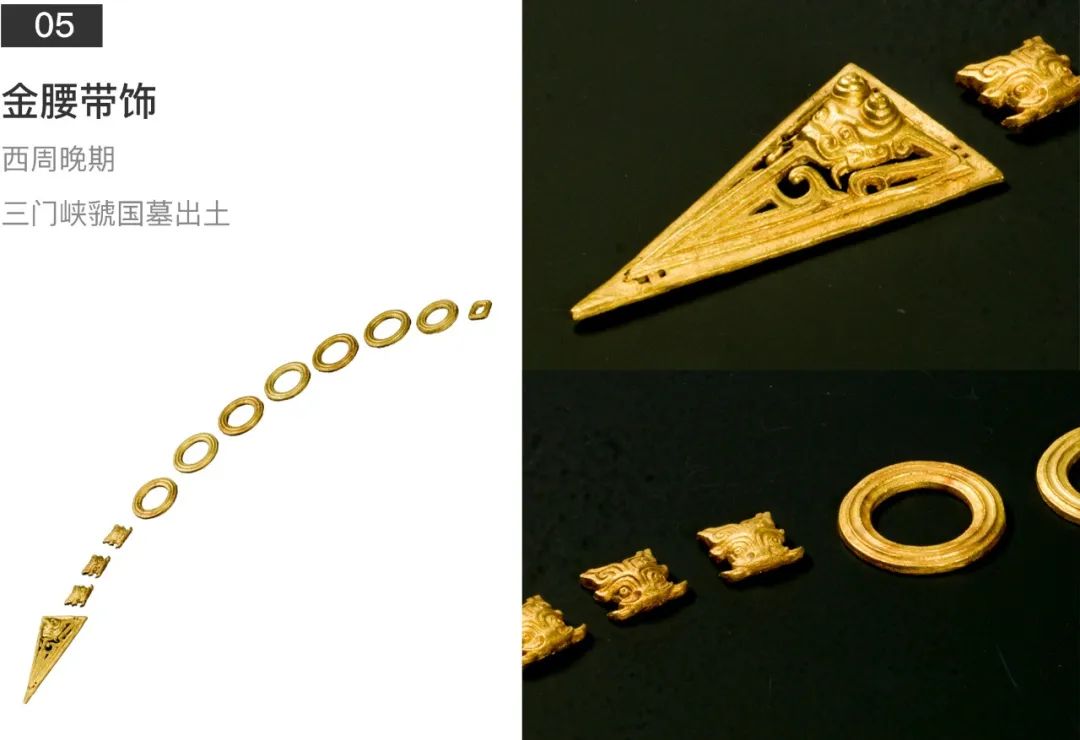
The overall layout is well -proposed and harmonious, the pattern patterns are symmetrical and neat, the four -petal pattern is very rare, and the head button is rare, giving people a strong artistic appeal. The faulty silver is symmetrical and harmonious, the decorative is gorgeous, and the shape is exquisite and exquisite.
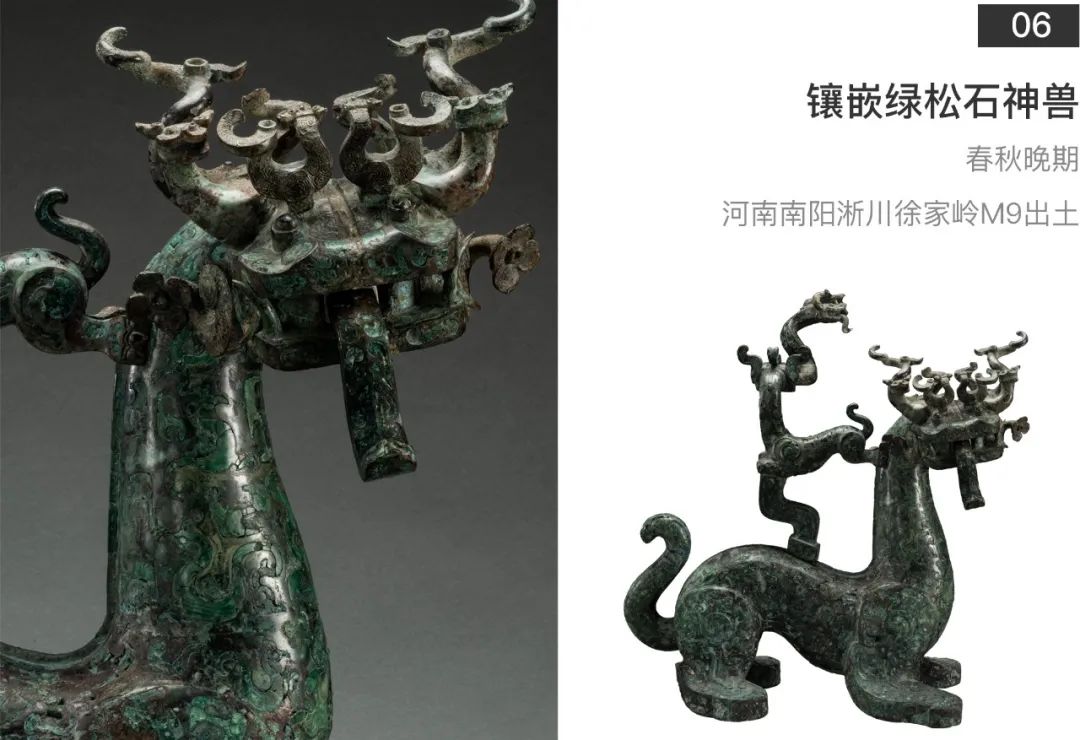
The rectangle has a handle, and the outer wall is engraved with seventy -five -character inscriptions. It is divided into Shang Ye and Qin Shihuang two times. In the inscription, in the eighteen years of Qin Xiaogong, Daliang made the standard capacity of the queen in Shangyang. The "Chongquan" in the front wall is the county name, in the south of Pucheng County, Shaanxi. The "Lin" on the left is a place name, in Linxian, Shanxi. This is the place where Shang Yangfang was promoted twice. The inscription at the bottom is the order of Qin Shihuang's uniformly measure in the twenty -sixth year of Qin Shihuang.
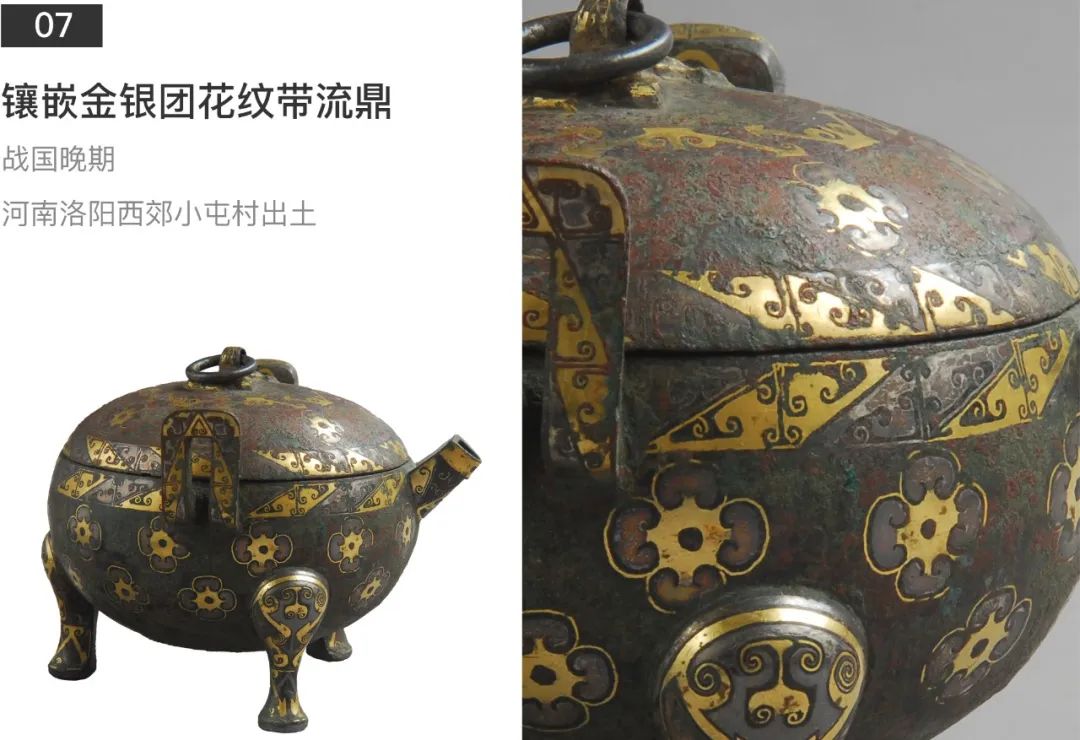
The exhibits are inlaid with turquoise beast facial manking and the mother -in -law Xin Yan ended on August 30

Part of the picture provides: Shanghai Museum
- END -
Crafts+public welfare!Together with Guangzhou landmark business cards to create a cultural feast that brings home

On August 28, a cultural feast of cultural reading in Guangzhou kicked off. At the...
Lile and Music Shandong | Dongying: "Welcome to the Twenty Singing New Age" The original music work "Beautiful Action" in Hekou District
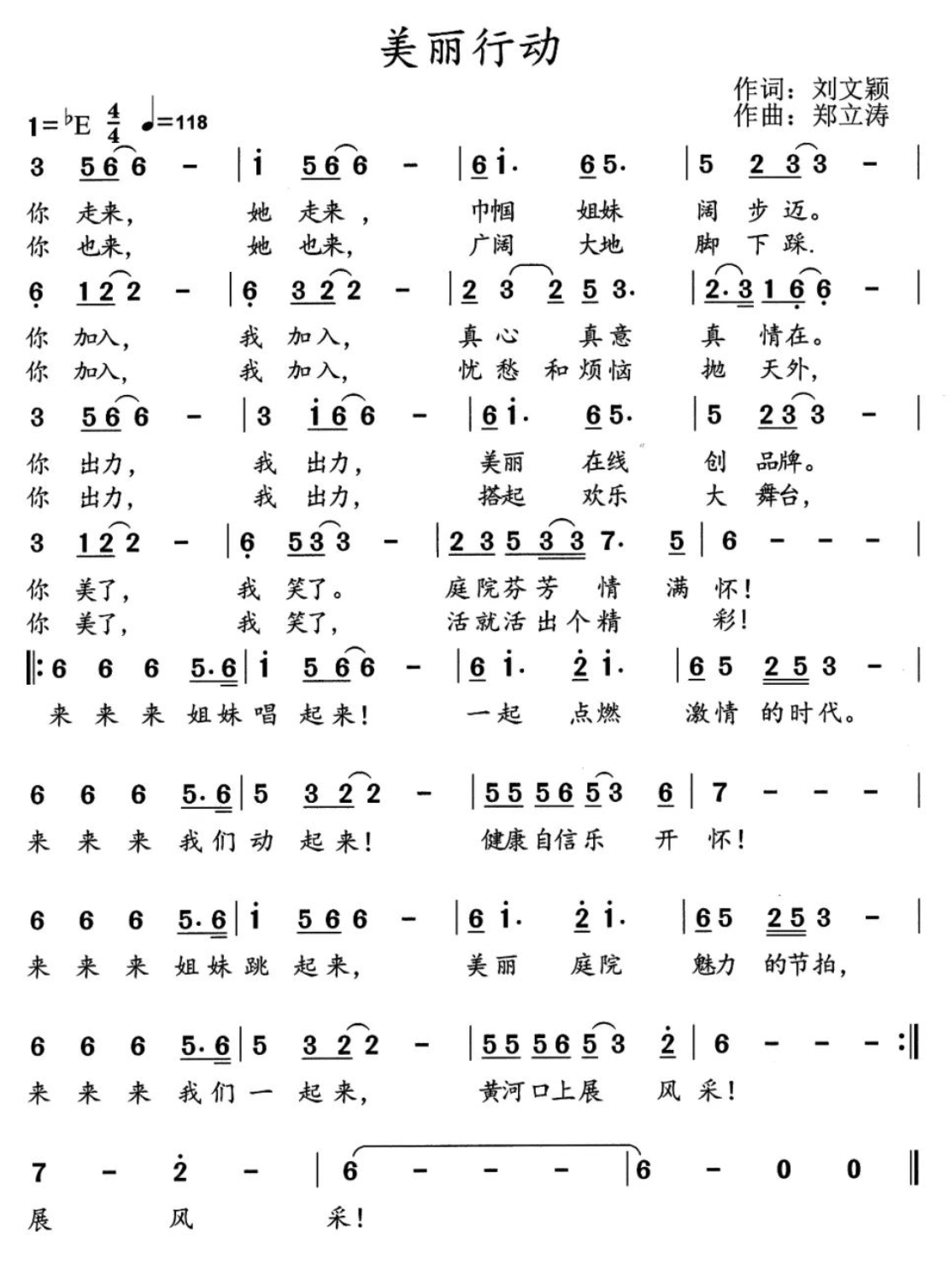
Welcome to the new era. In order to vigorously prosper the art creation of the new...